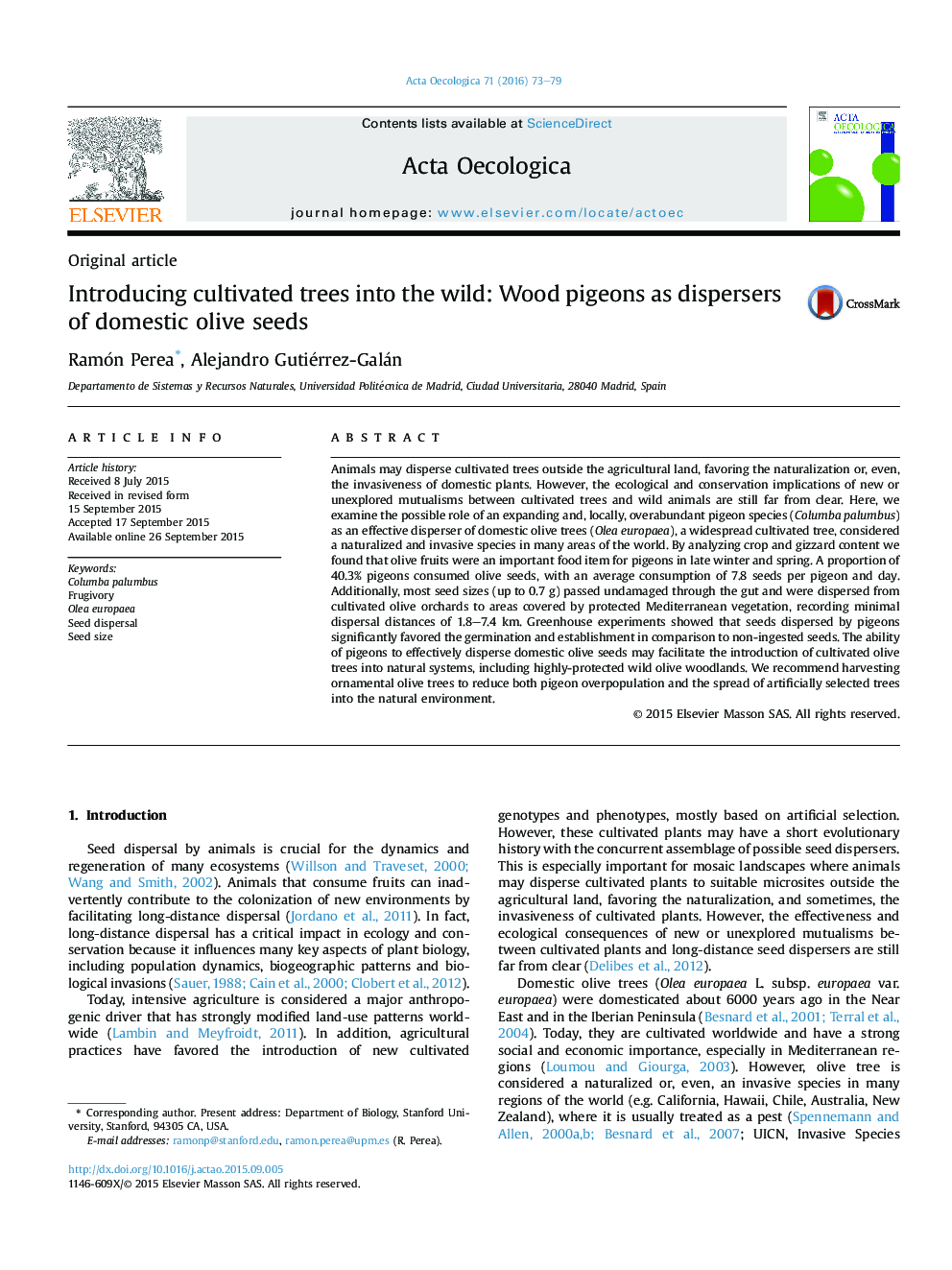| Article ID | Journal | Published Year | Pages | File Type |
|---|---|---|---|---|
| 4380737 | Acta Oecologica | 2016 | 7 Pages |
•We assess the effectiveness of wood pigeons as dispersers of domestic olive seeds.•40.3% of pigeons consumed olive seeds, with a mean of 7.8 seeds per pigeon and day.•Most seed sizes passed undamaged through the gut, with germination rates >10%.•Pigeons can act as long-distance dispersers (>7 km) of cultivated olive trees.•Pigeons facilitate the dispersal of cultivated olive trees into the natural systems.
Animals may disperse cultivated trees outside the agricultural land, favoring the naturalization or, even, the invasiveness of domestic plants. However, the ecological and conservation implications of new or unexplored mutualisms between cultivated trees and wild animals are still far from clear. Here, we examine the possible role of an expanding and, locally, overabundant pigeon species (Columba palumbus) as an effective disperser of domestic olive trees (Olea europaea), a widespread cultivated tree, considered a naturalized and invasive species in many areas of the world. By analyzing crop and gizzard content we found that olive fruits were an important food item for pigeons in late winter and spring. A proportion of 40.3% pigeons consumed olive seeds, with an average consumption of 7.8 seeds per pigeon and day. Additionally, most seed sizes (up to 0.7 g) passed undamaged through the gut and were dispersed from cultivated olive orchards to areas covered by protected Mediterranean vegetation, recording minimal dispersal distances of 1.8–7.4 km. Greenhouse experiments showed that seeds dispersed by pigeons significantly favored the germination and establishment in comparison to non-ingested seeds. The ability of pigeons to effectively disperse domestic olive seeds may facilitate the introduction of cultivated olive trees into natural systems, including highly-protected wild olive woodlands. We recommend harvesting ornamental olive trees to reduce both pigeon overpopulation and the spread of artificially selected trees into the natural environment.
